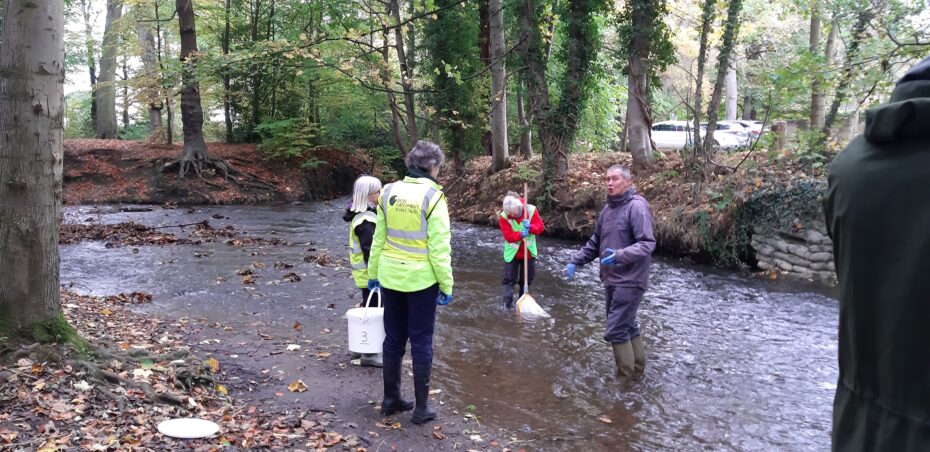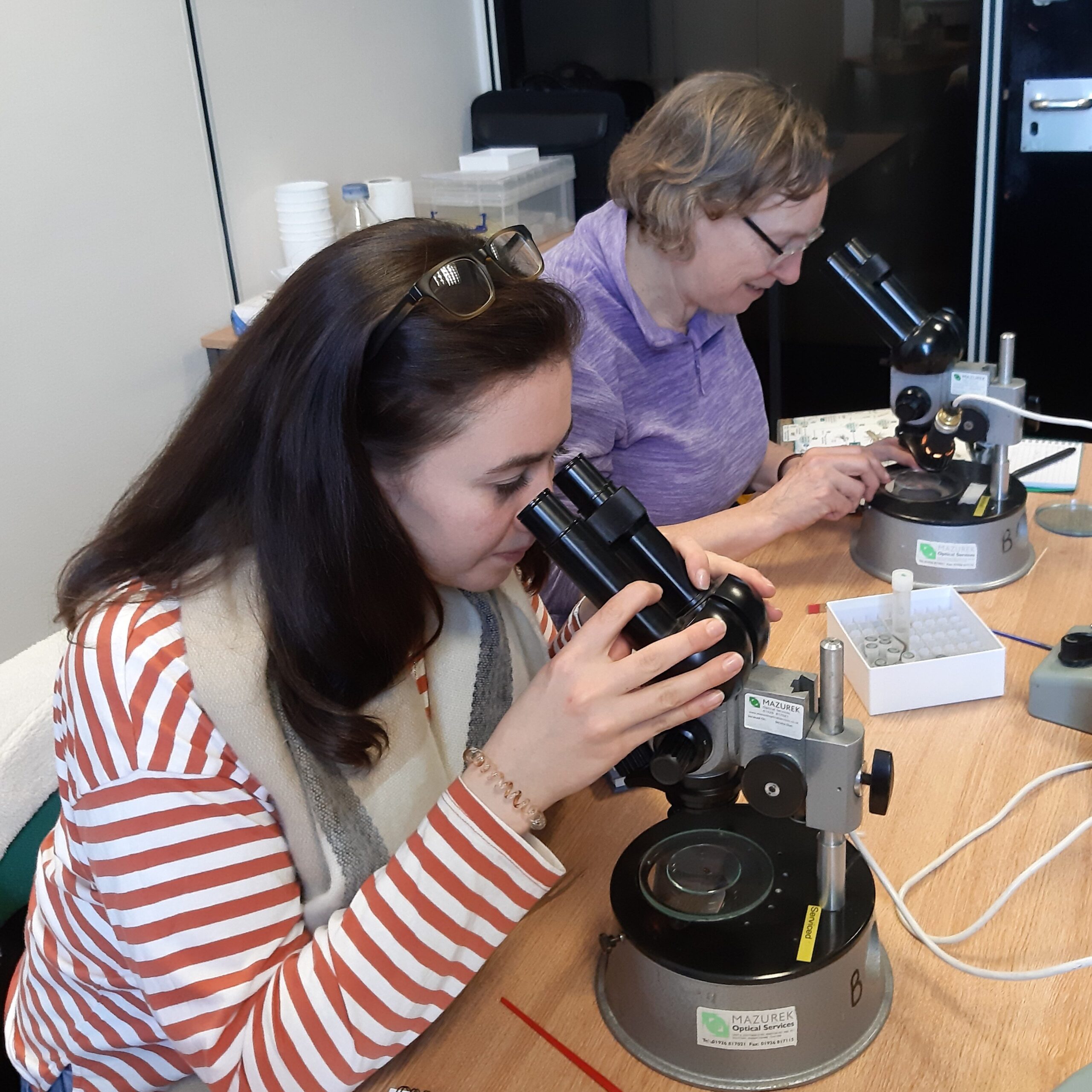Citizen Science
Citizen science uses the power of people to collect, record and analyse biological and environmental data. Working together to collect data across the catchment, Citizen Scientists contribute to our understanding of the overall health of our rivers.
If we don’t know which species of plant and wildlife are present in our rivers, we cannot act to better protect or conserve them. Citizen science includes surveys, wildlife camera recordings and anecdotal records, which together help to build a picture of what wildlife is present, and what is missing. This data helps us to decide what practical measures are needed, such as installing riverside nest boxes, or eradicating invasive plants. Citizen science can also help us to confirm whether our river interventions are working for the environment, in the way we intended, for example improving water quality or diversity of freshwater life.
We share wildlife records and environmental data with partnership organisations, to help them get a better understanding of our catchment and how it relates to the regional and national picture.
Existing projects you can get involved in:
Grassmoor Country Park butterfly surveys
DCRT are hosting butterfly surveys at Grassmoor Country Park in Chesterfield under the UK Butterfly Monitoring Scheme. These surveys occur over the full 26 week period between April and September inclusive. DCRT will be present at the park on the first Monday of every month and the other weeks will be recorded by volunteer Citizen Scientists. Butterfly surveys have to occur on bright sunny days so please check our events calendar for the next survey and register your interest via email so you can be notified of any cancellations.
Find ‘Butterfly Transect Surveys in Grassmoor Country Park’ events for more details
Wardsend Cemetery bird and butterfly surveys
Sheffield and Rotherham Wildlife Trust, DCRT and Friends of Wardsend Cemetery have teamed up to collect Data for Nature. There are monthly bird surveys happening at this site in Hillsborough, Sheffield. In the summer months, there are butterfly surveys too. If you have birding/butterfly skills we’d really appreciate your help surveying, or if you are a beginner come along to practice your skills! Check out our events calendar for when the next survey is.
Salmon Recorder
DCRT have helped to construct six fish passes and two eel passes on weirs in the Don Catchment. This is to help with the return of Atlantic Salmon to the catchment. If you are walking along the Don and see a salmon, you can record it with us! Read more on the link below about how to identify the fish and how to record them.
Waterblitz – Slow the flow to Grassmoor Country Park
DCRT and Friends of Grassmoor Country Park developed a multi-beneficial scheme to help reduce flood risk, enhance and create wildlife habitat, and improve visitor access and interest. Ponds and earth embankments were built to allow the site to temporarily hold back water. Seeds were sowed to introduce a greater variety of plants to the meadows. Get involved by taking pictures around the site so that we can monitor how these features function and how the landscape is changing.
Details on the project and how to get involved
Riverfly monitors
DCRT coordinate two Riverfly Monitoring Teams in the Don Catchment – one on the river Went near Pontefract and another on the Holme Brook and river Hipper in Chesterfield. The data volunteers collect helps to detect severe pollution events in our rivers and understand what invertebrates are in different parts of our catchment.
Explore the data by clicking here
Invasive Species
Invasive species (or Invasive Non-Native Species) are those that have been introduced outside of their natural geographic range, causing environmental impacts. If you spot species such as Himalayan Balsam, you can report it via the Yorkshire Invasive Species Forum and action can be taken to remove it.
Yorkshire Invasive Species Forum
Past projects:
Wildlife camera project 2019
Using wildlife camera’s deployed and monitored by Citizen Scientists and in conjunction with MammalWeb, the project identified 1,138 mammals and birds on the River Rother at the Avenues Washlands. This was part of the Hidden Heritage Secret Streams project.
Click here to look at the data!
Otter footage captured during the project!
Interested in training?
DCRT offers training in The Anglers’ Riverfly Monitoring Initiative (ARMI) to riverfly groups. To find out more including fees, contact us [email protected] or click below to access our contact form.

Freshwater invertebrate training downloads
Thanks to our lead volunteer, Paul Hancock for these resources
Introduction to freshwater invertebrates webinar
Introduction to mayflies Test yourself
Introduction to stoneflies Test yourself
Introduction to caddisflies Test yourself



